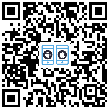“登月队长”解密Google X



|
????说到塑造未来,阿斯特罗?泰勒鲜有对手。他的正式头衔是谷歌 “登月队长”——一个颇具谷歌风范的称谓;他的日常工作是负责Google X实验室的运营,谷歌将其称为“登月工厂”。在这里,谷歌正在开发无人驾驶汽车、谷歌眼镜、Loon项目(通过高空气球提供上网服务)、Makani项目(通过高空风轮机发电)以及用于检测癌症和其他疾病的纳米胶囊。在工作上和泰勒密切配合的有谷歌首席执行官拉里?佩奇(《财富》杂志2014年年度商人),以及谷歌联合创始人、管理着Google X和其他一些专业项目的谢尔盖?布林。最近,泰勒接受了《财富》杂志的采访,介绍了Google X如何获取突破性创新。 ????《财富》:Google X的“登月”项目是怎么来的? ????事先声明一下,这并不简单,但我觉得在看待那些难以企及的事情时我们至少有几条原则。 ????要从概念上成为“登月”项目,得具备三个要素。这并不是说有了这三个要素我们就一定会去做这件事,它的意思是如果没有这三个要素我们就一定不会去做。 ????首先,它得是一个重大问题。这看上去是显而易见的事情,但实际上这一概念模糊的令人难以置信。 ????其次,得有人提出某种激进的解决方案。这种产品或服务听起来得像是科幻小说里的东西。显然,它听起来是否真的像来自艾萨克?阿西莫夫的科幻小说并不重要。重要的是,我们不能步别人的后尘,因为觉得自己比以前那些人聪明,拥有更好的资源,或者付出更多努力的想法一点也不靠谱。 ????最后,我们有理由相信它不是空中楼阁。我们将其称为突破性科学或技术。 ????这种科技可能来自于谷歌,也可能来自于他人。它可能已经在某个领域发挥了作用,但从未移植到其他领域。在很多情况下,我们最终都会恍然大悟,从而意识到这件看起来近乎不可能的事也许并非不可能。 ????这三个要素不会一下子都出现,对吧? ????是这样。因此,在某些情况下找到其中一个要素比较容易,而找到另外两个比较困难。有时候我们觉得已经找到了其中两个,甚至三个要素都已具备,但一段时间后,其中一个就会消失。 ????以Loon项目[通过高空气球在全球范围内提供网络连接]为例,这三个要素非常明显。全球有50亿人上不了网。就促进世界和平、繁荣而言,还有什么事业能够与为50亿人提供上网渠道相比呢? ????非常笼统地讲,用气球而不是卫星来实现这个目标可以算是一种激进的解决方案。 ????因此,在近一年的时间中,我们的工作并不是证明“这行得通”,而是证明“这行不通,以及我们怎样才能尽快发现为什么它行不通?这样就可以放弃它,然后转向别的项目。”我们努力尝试了一年,连续失败了很多次,然后才开始认真对待这个项目。 |
????There are few people more qualified to talk about shaping the future than Google’s Astro Teller. His official title the oh-so-Googley “Captain of Moonshots.” His day job is running Google X, which the company calls its “moonshot factory.” It’s where Google GOOG -0.30% is developing self-driving cars, Glass (its glasses-like wearable computer), Loon (a project to deliver Internet access worldwide through high-altitude balloons), Makani (an effort to generate energy through high-flying wind turbines), and ingestible nanoparticles that would detect cancer and other diseases. Teller works closely with CEO Larry Page, which Fortune named 2014 businessperson of the year, and Sergey Brin, the Google co-founder who oversees X and other special projects. He recently spoke with Fortune about his lab’s approach to breakthrough innovation. ????Fortune: How do moon shots come together at Google X? ????Well, with the caveat that it’s not simple, I think that there are some principles, or some ways of seeing, at least, things that don’t work. ????You have to have three things in order for it to conceptually be a moon shot. That doesn’t mean we’ll necessarily do it, but it means necessarily we won’t do it if it doesn’t have these three things. ????The first one is that it’s a huge problem. That sounds pretty obvious, but it’s incredibly not obvious in fact. ????Then the second thing is that there has to be some kind of radical proposed solution. It should be a science fiction-sounding product or service. Obviously whether it really sounds like it comes out of [Isaac] Asimov isn’t important. What’s important is that we be not treading the same ground that other people have tread before because thinking that we’re going to be smarter or better resourced or work harder than people who’ve come before us is just not a good bet. ????Then the third one is some reason to believe that this isn’t just pie in the sky. We would call this breakthrough science or tech. ????This could be something we’ve discovered. It could be something someone else has discovered. It could be something that has worked in one domain but has never been transplanted to this other domain. There are lots of different ways of ending up having an “Aha!” moment where you believe that something looks nearly impossible might not be impossible. ????These three things don’t happen all at once, right? ????That’s right. So in some cases one of these is easy and the others are hard. Sometimes we will think we have a bead on two or even three of these things, but after awhile one of them will fall away. ????Take Loon [the Google X project to deliver Internet connectivity worldwide through high-altitude balloons], for example. This was super obvious. There are 5 billion people in the world who don’t have Internet connections, and there’s very little that would cause the world to be more at peace, more prosperous than getting the other 5 billion people on the planet connected. ????Very generally, doing this from balloons rather than from satellites sort of has the form of a radical solution. ????And so we went through a process for almost a year where the mantra was not “This is going to work” but “This is not going to work. How can we discover why this won’t work as fast as possible so that we can discard this and move on to something else?” And it was only having tried rigorously for a year and having failed to fail many times in a row that we got to the point where we were starting to take this project really seriously. |
最新文章




